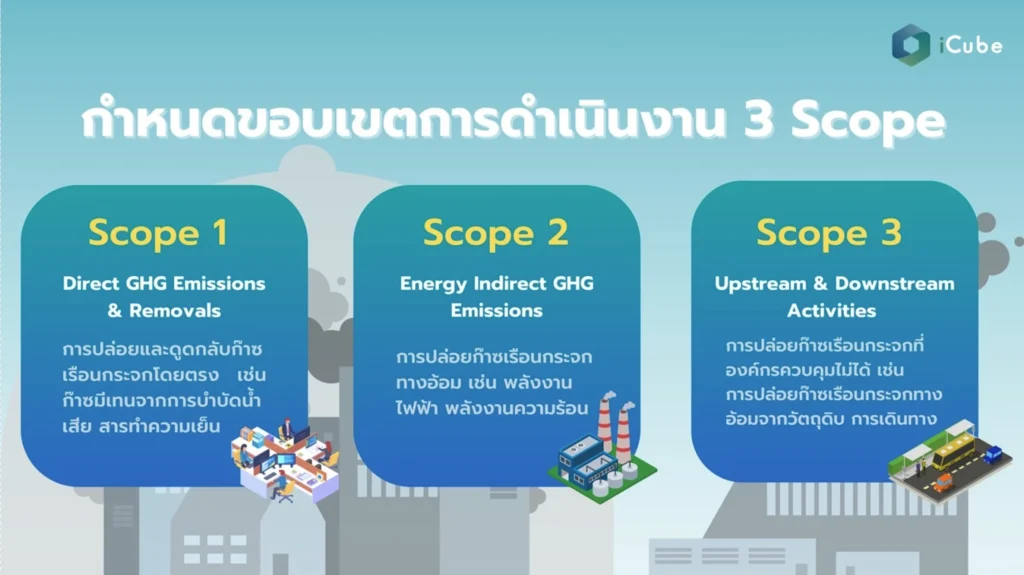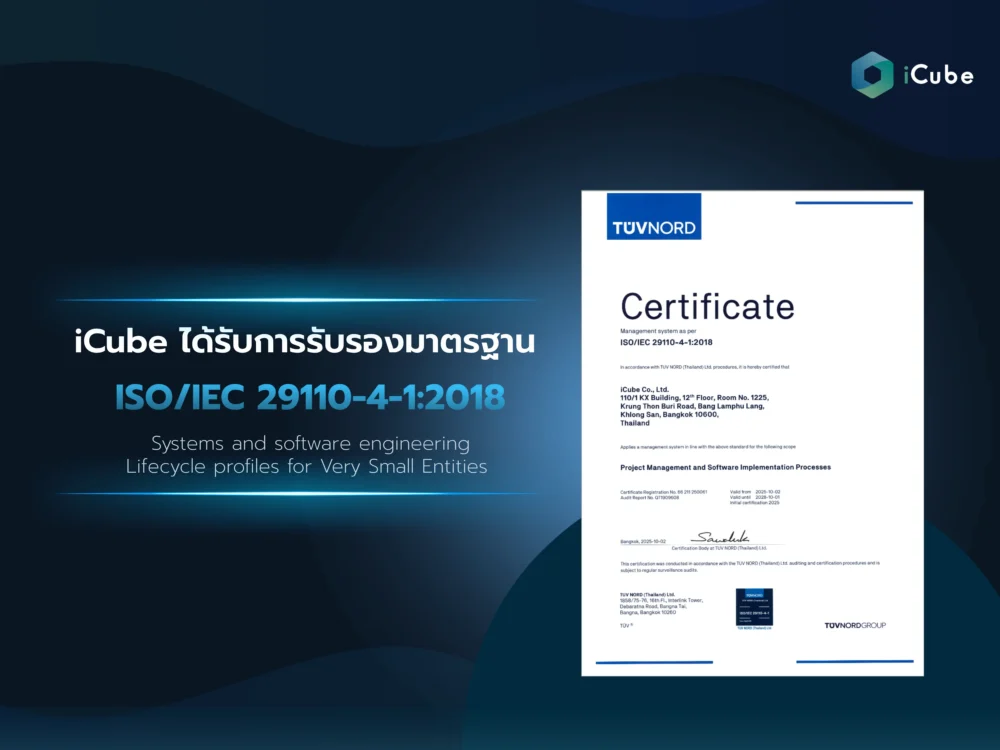

Today, many organizations are becoming increasingly aware of the environmental impacts caused by their operations—both direct and indirect. With the growing urgency to address greenhouse gas (GHG) emissions, the European Union’s Carbon Border Adjustment Mechanism (CBAM) is set to take effect in 2025. Under this regulation, exports to EU countries will be subject to a carbon tax if companies cannot demonstrate control over the carbon footprint generated during their production processes.
Assessing an organization’s carbon footprint is therefore a critical step toward understanding the amount of GHG emissions produced. It enables businesses to calculate and manage their emissions effectively, promoting long-term environmental improvements. To support this goal, iCube presents six key steps to help organizations prepare for the CBAM requirements and contribute to lasting environmental change.
1. Defining the Organizational Boundary
Establishing the organizational boundary is the first step in carbon footprint assessment. The goal is to clearly outline the areas over which the organization has control and that directly impact the environment—including impacts from joint ventures or investments. There are two main approaches:
- Control Approach
This method defines the boundary based on areas and activities over which the organization has direct control, such as facilities it owns or majority-controlled joint ventures. Using this approach gives a clear picture of GHG emissions that can be directly managed and reduced. - Control Approach
This method defines the boundary based on areas and activities over which the organization has direct control, such as facilities it owns or majority-controlled joint ventures. Using this approach gives a clear picture of GHG emissions that can be directly managed and reduced.
2. Defining Operational Boundaries in Three Scopes
To ensure an effective carbon footprint assessment, organizations are encouraged to follow the Greenhouse Gas Protocol, which categorizes GHG emissions into three distinct scopes:
- Scope 1: Direct GHG Emissions & Removals
This includes direct emissions from sources that are owned or controlled by the organization. Examples include emissions from factory chimneys or leaks from refrigeration systems. Scope 1 emissions are typically easier to manage because they stem from activities within the organization’s direct control. - Scope 2: Energy Indirect GHG Emissions
These are indirect emissions resulting from the generation of purchased energy, such as electricity, steam, or heating. While the organization may not produce this energy itself, it is responsible for its consumption. Reducing Scope 2 emissions can be achieved by switching to renewable energy sources or improving overall energy efficiency. - Scope 3: Other Indirect GHG Emissions
This scope covers all other indirect emissions that occur outside of the organization’s direct control. Examples include employee travel, transportation of raw materials and products, or upstream emissions from purchased goods and services. Although Scope 3 emissions are the most difficult to track and manage, they often represent the largest share of a company’s total emissions and are therefore critical to address.
3. Data Collection & Carbon Footprint Calculation
Data collection and accurate calculation are key steps guided by the ISO 14064-1 standard. Organizations must gather what’s known as Activity Data, which may include energy consumption at facilities, raw material usage, and employee travel data
A commonly used formula for calculating carbon footprint is:
CO₂ Emissions = Activity Data × Emission Factor
Example: Company A uses 10,000 liters of diesel annually for product transportation.
- Activity Data: 10,000 liters of diesel
- Emission Factor: 2.708 kg CO₂e per liter of diesel
CO₂e = 10,000 × 2.708 = 27.08 metric tons CO₂ equivalent
This data helps organizations gain a clear understanding of their emissions and enables more effective monitoring of environmental impact across operational activities.
4. Quality Management of GHG Inventory
Ensuring the quality and accuracy of reported data is essential. Organizations should appoint dedicated teams to verify the completeness and consistency of the information collected. Regular data reviews help improve the accuracy of the carbon footprint assessment and align the greenhouse gas inventory with international standards—reducing the risk of calculation errors and ensuring the integrity of reporting.
5. Reporting
Greenhouse gas reporting provides a formal record for review and audit purposes. Organizations are required to prepare emissions reports in a structured format to facilitate third-party verification. Additionally, these reports support registration with the Thailand Greenhouse Gas Management Organization (TGO), ensuring that reported emissions align with national standards and the EU’s CBAM compliance criteria.
6. Verification & Certification
Following reporting, the verification and certification process ensures the accuracy and credibility of carbon footprint data. Organizations must validate that all emissions figures are precise and well-documented. Registration with TGO helps certify that the organization has followed approved carbon assessment standards—enhancing environmental accountability and readiness for upcoming CBAM regulations.
Conclusion
Carbon footprint assessment is more than a legal compliance process—it is a strategic step toward sustainable business practices. By reducing greenhouse gas emissions, organizations not only meet international expectations but also strengthen their reputation for environmental responsibility. This foundation positions them as forward-thinking leaders in the emerging green economy.






